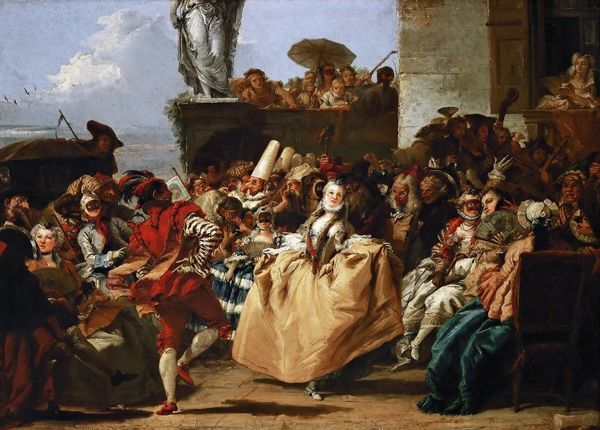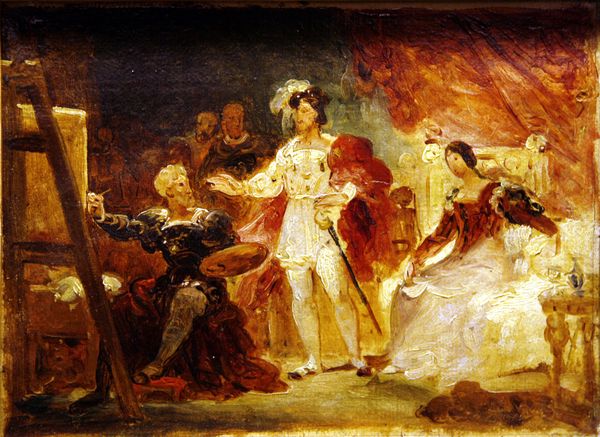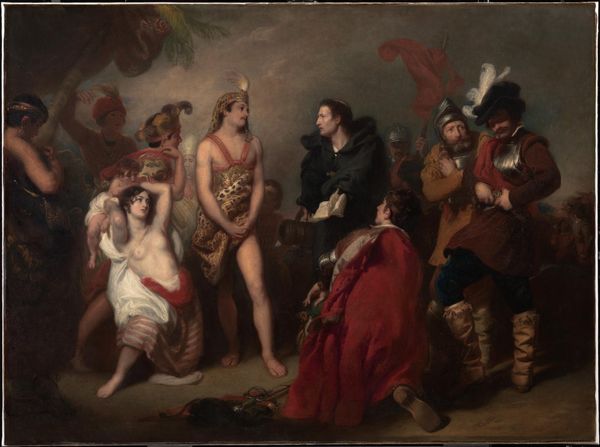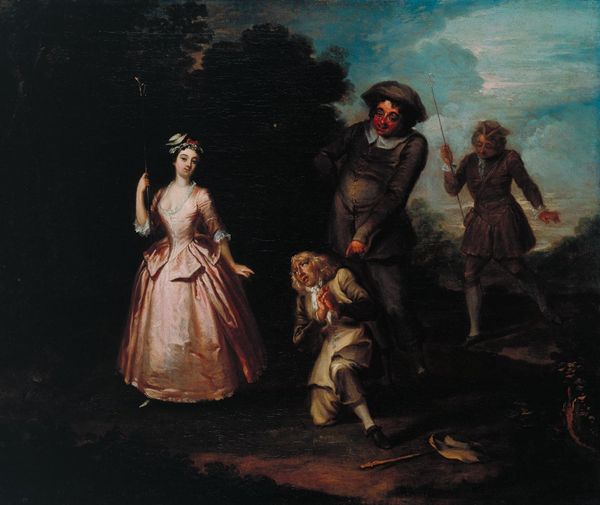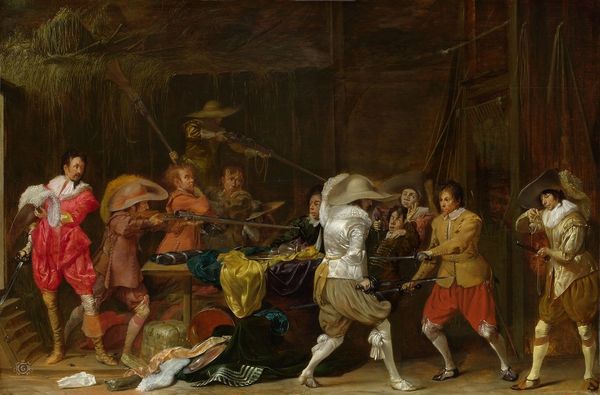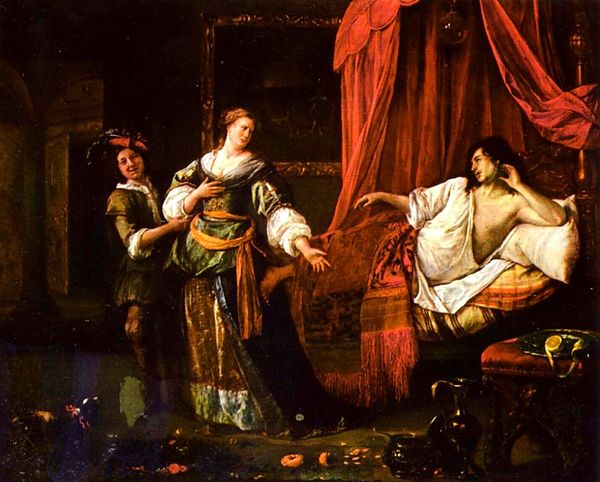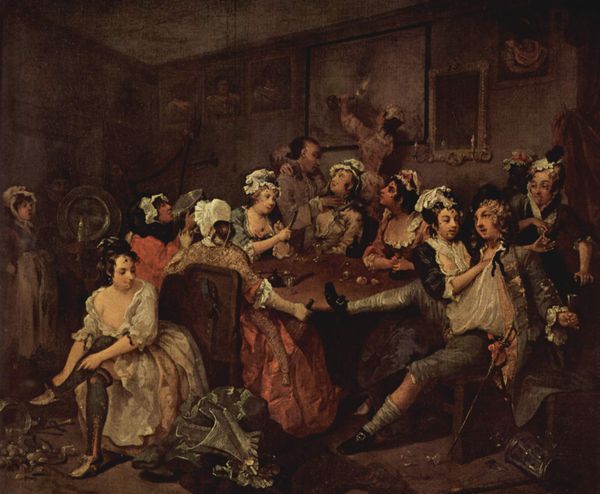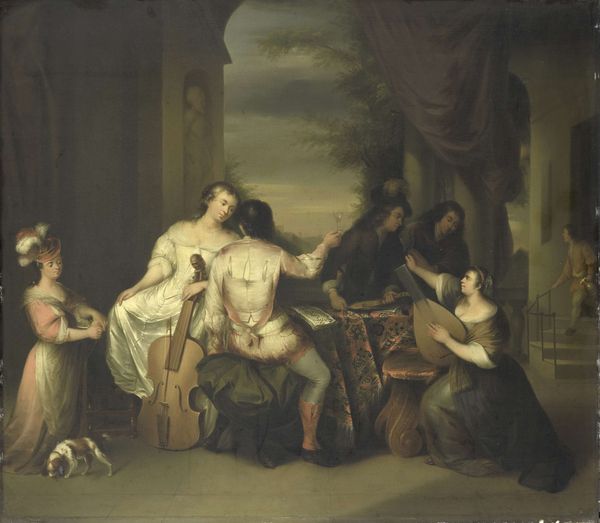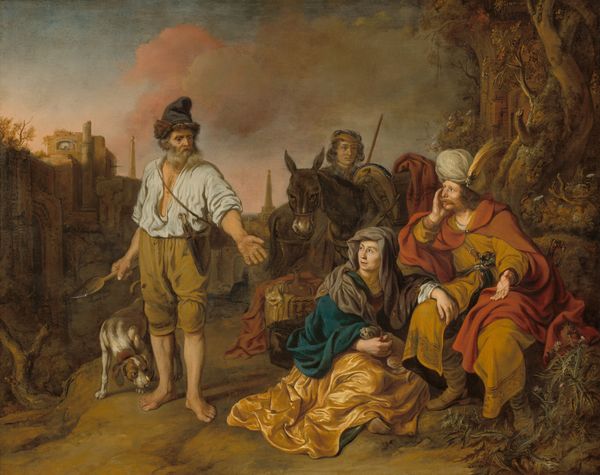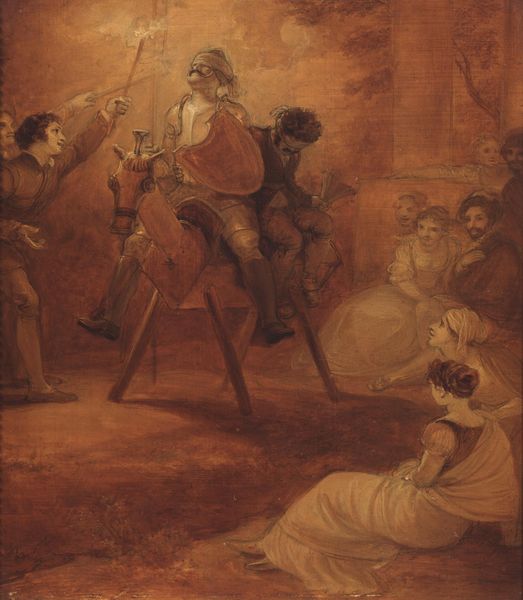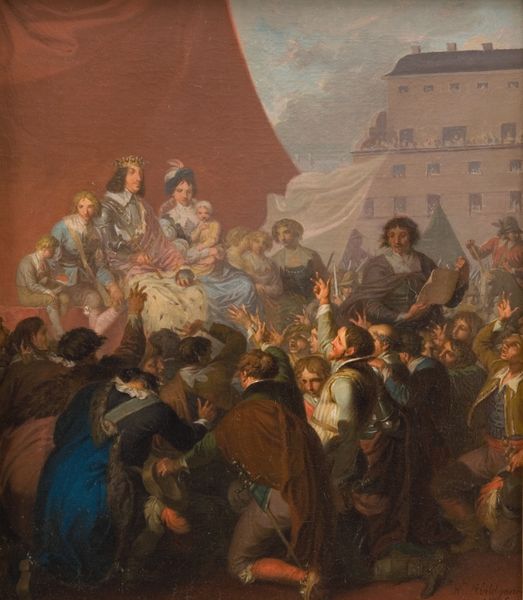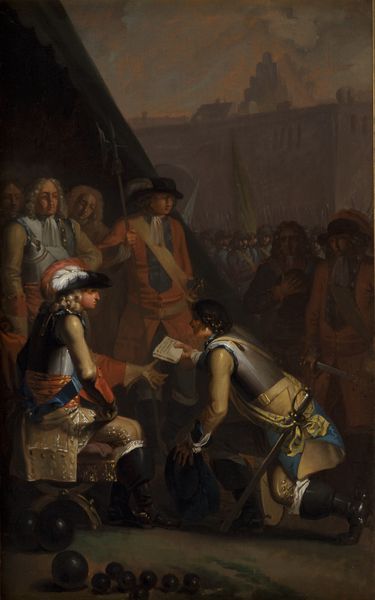
The Escape of Francesco Novello di Carrara, with his Wife, from the Duke of Milan Possibly 1850
Dimensions: support: 1270 x 1016 mm
Copyright: CC-BY-NC-ND 4.0 DEED, Photo: Tate
Editor: This is "The Escape of Francesco Novello di Carrara, with his Wife, from the Duke of Milan" by Sir Charles Lock Eastlake. It feels like a scene plucked right from a historical novel, so dramatic! What strikes you when you look at this painting? Curator: It’s the tension, isn’t it? The way Eastlake captures the precariousness of their flight. Look at the landscape, the foreboding castle, and the expressions on their faces – a mixture of fear and determination. Do you sense that urgency? Editor: Absolutely! The figures seem to be rushing, but also weighed down. There's a weight to their escape. Curator: Exactly. It's a visual poem about the burdens of freedom and the price of survival. Consider how relevant this story is to our times, don’t you think? Editor: I see what you mean! The painting is far more than just a historical snapshot. Curator: Indeed. Eastlake invites us to reflect on courage, sacrifice, and the timeless human quest for liberty. It gives one pause, doesn’t it?
Comments
http://www.tate.org.uk/art/artworks/eastlake-the-escape-of-francesco-novello-di-carrara-with-his-wife-from-the-duke-of-milan-n00399
Join the conversation
Join millions of artists and users on Artera today and experience the ultimate creative platform.
Part of the cultural background to Romanticism was an explosion of historical writing. The medieval period was especially popular. Eastlake took this subject from a history of the Italian republics in the Middle Ages by Simonde de Sismondi. A liberal Swiss Protestant, Sismondi showed how Italy had been damaged by the transfer of power from local communities to tyrants like the Medici. Here, in an episode of 1389, the last lord of Padua flees the Duke of Milan. Contemporary Italians were being driven into exile for liberal sympathies and attempts to unify the country. Gallery label, November 2016
